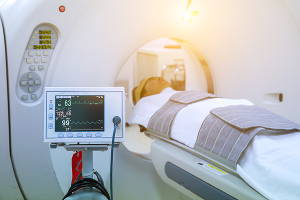by
John R. Fischer, Senior Reporter | July 21, 2020

A study using real-world data confirms claims that imaging volumes at U.S. healthcare practices dropped in ranges of 50%-70% during the pandemic.
Numerous anecdotal articles and predictive models make claims that the COVID-19 pandemic claim has plummeted medical imaging volumes anywhere from 50%-70%. Confirming these suspicions, however, has been a challenge, due to the minimal number of sources with actual real-world data.
Researchers at University Hospitals Cleveland Medical Center/Case Western Reserve in Ohio set out to do just this, evaluating eight weeks of imaging within the COVID-19 healthcare crisis time frame.
"Imaging utilization during COVID-19 has been highly variable and will continue to be through the rest of 2020," Dr. Keval D. Parikh, a diagnostic radiology resident PGY-4/R-3 at University Hospitals Cleveland Medical Center/Case Western Reserve University, told HCB News. "Based on our patient population demographics and state policies, our experience with COVID-19 has thus far been different from the experiences of our counterparts in New York, Los Angeles, Texas and other parts of the country. Positive cases are continuing to peak in many parts of the country, including in Ohio, and different states are responding in different ways."



Ad Statistics
Times Displayed: 364915
Times Visited: 6942 Quality remanufactured Certified Centrifuges at Great prices! Fully warranted and backed by a company you can trust! Call or click for a free quote today! www.Centrifugestore.com 800-457-7576
Parikh and his colleagues prepped for their assessment by creating an organizational structure with an Incident Command Center to ensure standardization of policies and procedures for addressing the pandemic across a health system of 18 hospitals. Its use enabled the researchers to assess system testing options and supply chain control of PPE, as well as repurpose staff that were not busy clinically to other areas of need.
A crisis time frame was set up and included imaging conducted between March 8 and April 30, with the first week of the date range and the 10 weeks prior to it used to determine the volume expected under ordinary conditions. A rolling seven-day total value was used to track and compare volume. Data was collected from a business intelligence and analytics platform that aggregates data primarily from the 3M M*Modal Scout System, the RIS and PACS system used to construct performance statistics by analyzing all radiologist-generated reports.
The researchers broke down total imaging utilization by patient setting (outpatient, ED, inpatient); imaging modality (X-ray, CT, mammography, MR, nuclear medicine/PET, US); and location. The locations in questions were the Central main campus of the healthcare system, as well as its smaller East and West Hospitals, all of which had the highest volumes. Revenue information was also collected from the hospital billing system.

